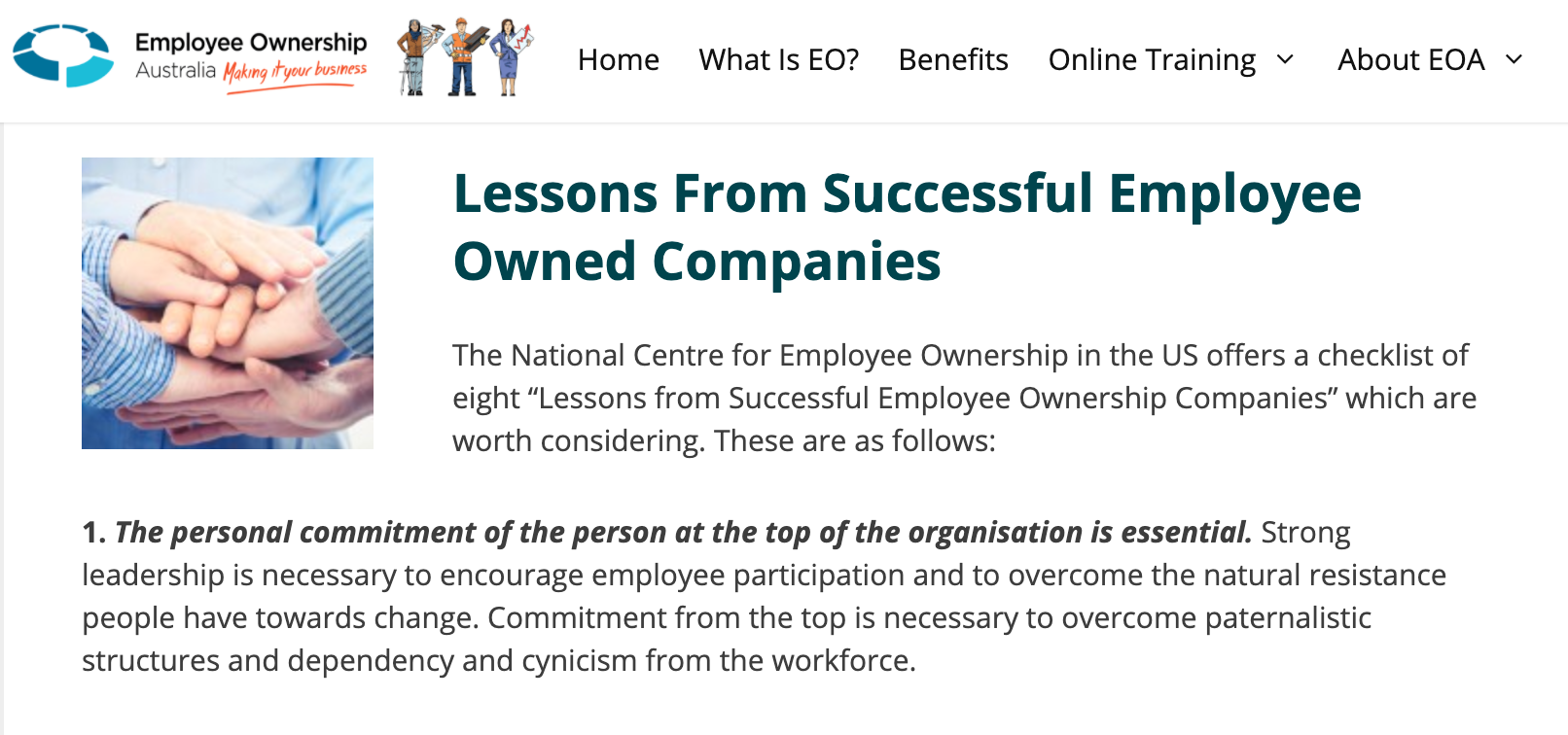 Lessons From Successful Employee Owned Companies
Lessons From Successful Employee Owned Companies
The National Centre for Employee Ownership in the US offers a checklist of eight “Lessons from Successful Employee Ownership Companies” which are worth considering. These are as follows:
1. The personal commitment of the person at the top of the organisation is essential. Strong leadership is necessary to encourage employee participation and to overcome the natural resistance people have towards change. Commitment from the top is necessary to overcome paternalistic structures and dependency and cynicism from the workforce.
2. A set of written values embodying your commitment to employee ownership. This ‘value statement’ must be more that just a set of platitudes or a public relations exercise. It must be a statement of the basic principles that should be a guide to everyone’s actions. This includes guidelines for corporate ethics.
3. Symbols of how everyone is treated as an owner are important. These must be more than just empty gestures. Some firms eliminate status perquisites such as executive lunchrooms, parking privileges, or different dress codes for managers. This is to maintain an atmosphere in which people can believe they are co-owners and their ideas valued. Even advertising and letterheads can reflect the employee ownership of the firm.
4. The people who have the most expertise in an area should be the ones making decisions about it; this is the most important point. If this employee-driven communication becomes institutionalised in the culture of the company, there should be freedom for sharing information across the board. It takes the pressure off the manager to be the fount of all knowledge, and gives an opportunity to the worker who ordinarily would not want to air a different opinion to that of their manager.
5. If the employees are to participate in decision-making, they need training to develop the necessary skills. This is important because people need to be taught to be participative. In some companies, new employees are assigned a mentor or guide for the first month or year, to familiarise them with the company’s culture.
6. Information should flow freely from the top down and the bottom up – not just from employers, about what a good deal the employees are getting, but also employees in regards to workplace innovations and so on. Open door policies or more formal approaches, where employees are represented in decision-making committees and/or groups, are both effective in maintaining this ‘information flow’.
7. Participative decisions take more time to make but less time and effort to implement than non-participatory decisions. It takes time to reach consensus, but once everyone is agreed, then implementing the decision is fairly smooth. If a decision is simply handed down from above, its implementation may be delayed by employee resistance.
8. No pat formulas exist for implementing the ‘ownership theory’. What works in one company may not work for another, or even the same company at a different stage of its development.
To find out more about how employee ownership can work see Effects of ESOP Adoption and Employee Ownership: Thirty years of Research and Experience*, Shared Company – How employee ownership works and Making Employee ownership Work.

